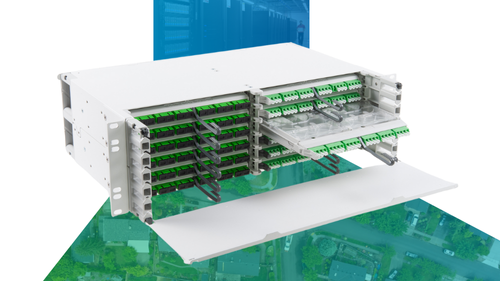HFC network evolution is one of the most complex and impactful set of decisions facing today’s operators. The difficulty is identifying potential market challenges and addressing them with the right technology in a timely and cost-effective manner. The operative term is “right technology.”
DOCSIS 4.0 (D4.0) is designed to carry the cable industry into the 10G future. It will enable 10 Gbps downstream (DS) rates and 5 Gbps upstream (US) rates. It’s the first DOCSIS standard to incorporate both Full Duplex DOCSIS (FDX) and Extended Spectrum DOCSIS (ESD)—the two primary pathways for evolving today’s HFC networks.
The choice between FDX and ESD is just one of many facing operators now. But there is also the question of what to do with today’s technology. The considerations include timing, cost, and competition. To take the next steps along a path to migration, operators must make crucial technology decisions in the context of the market and their customers’ needs. Let’s look at some of the trends and options influencing these decisions.
The COVID-19 pandemic
The pandemic has caused significant increases in DS and US consumption as countries and cities enforce lockdowns to control the disease. With people sitting at home for many more hours per day than usual, network consumption has skyrocketed. The biggest culprits include video streaming, remote working and learning, virtual video gatherings, and gaming.
At its peak, COVID accounted for nearly 50 percent increases in US bandwidth use and 25 percent upticks in DS utilization (measured during the busy hour in the evening). Based on our traffic engineering models, we expect these to settle to about half on an ongoing basis in the near future.
DOCSIS 4.0 - network migration tools
There are many solutions in the network migration toolbox. These can be used to phase in an optimal migration path that extends the useful lifespan of today’s HFC network while gradually transforming it into its desired form as a Fiber-to-the-Home (FTTH) network for the future.
One of the most effective tools is selective subscriber migration. This is where operators move customers requiring very high peak rates onto a different platform—an overlay FTTH network running a specific flavor of PON, for example. The benefit of this approach is that it avoids the need to upgrade the entire network to meet the abnormal service levels associated with very small penetration rates. If only a select number of residential or business customers are requesting symmetrical 10 Gbps service, then it makes sense to move those few customers to 10G PON as opposed to overhauling the whole HFC network.
Another popular solution is node splits and segmentations, which can help to reduce the number of subscribers in each service group, leading to less congestion and the ability to support higher peak service rates for longer periods.
There are also multiple US split upgrade options supported by DOCSIS 3.1 specifications to achieve higher peak rates: sub-split (5-42 MHz in NA and 5-65 MHz in Europe), mid-split (5-85 MHz), and high-split (5-204 MHz). Supporting US rates up to 400 Mbps will require moving from sub-split to mid-split. On the other hand, supporting US rates in excess of 1 Gbps will require a move to a high-split architecture. D4.0 specifications add ultra-high-split options with US limits up to 300 MHz, 396 MHz, 492 MHz, and 684 MHz. These may someday permit US rates up to 5 Gbps.
Another way to free crucial spectrum is video delivery optimization via digital video, switched digital video, and IPTV. Analog channels do not utilize spectrum very efficiently, so transitioning video from analog to digital channels will enable better utilization of the scarce spectrum via more efficient encoding schemes of the digital content.
Adding SDV capabilities that only transmit video streams when being viewed can also help reduce spectrum utilization for video services. As time goes on, reducing the number of digital video channels and migrating to IPTV video, which uses more spectrally efficient DOCSIS 3.1 channels, will provide yet another level of efficient usage of spectrum.
Along the path to D4.0, FDX is a promising option designed to allow US and DS traffic to share the same spectrum, simultaneously. It is optimized for DAA N+0 network architectures without amplifiers. An alternative is Dynamic Soft-FDD, where the split is changed dynamically to match the traffic demand, offering the same benefits as FDX but with typically larger interference groups.
Dynamic Soft-FDD essentially enables FDX-like operation in cascaded Node+X networks with amplifiers. Finally, ESD provides the third option, where the DS spectrum can go beyond 1.2 GHz. While it requires changing taps and amplifiers, it works in an FDD mode just like today’s networks. In addition, ESD can capitalize on the already-mentioned Dynamic Soft-FDD approaches to dynamically change its split frequencies.
As operators push fiber deeper into their networks, active taps can be employed as small active devices (amplifiers) to support relatively small, distributed gain values. This enables continued use of the hardlines with higher modulation orders at higher frequencies, which will yield additional capacities. Additionally, as a late-stage step before pulling fiber to the home—with or without active taps—operators can consider fiber to the tap (FTTT). This solution enables the use of existing drop cables that can support frequencies up to 25 GHz, which translates to data rates of more than 200 Gbps. In this case, the coaxial cable network becomes a point-to-point network, which will enable ESD operation in tandem with FDX operation.
DOCSIS 4.0 - migration strategy
An optimal network migration strategy requires a comprehensive decision-making process that takes stock of all available tools simultaneously. The process should be repeated every time a decision is to be made. Particular attention should be given to time-aware decision-making—that is, the optimal decision changes as time moves on.
There are myriad pathways for operators to leverage their HFC networks in supporting customer demand, but done correctly, much of today’s networks can stay relevant well into the 2030 decade. This is thanks to tools such as selective subscriber migration, node splits, moving video to IPTV, upgrading the US split, increasing the DS spectrum, Dynamic-Soft-FDD, active taps, FTTT, and FTTH.
After utilizing the selective subscriber migration concept to constrain the network migration process, a phased DOCSIS strategy combined with a time-aware decision process will provide insight into the most sensible migration for a given network. Light and medium touch options like moving the US split to 204 MHz with 1.2 GHz DS, as well as node splits and segmentations, can extend the life of the HFC network into the next decade if the desired DS Tmax is 2 Gbps or less. Moreover, deploying IPTV can further extend the life of HFC networks, especially when combined with Dynamic-Soft-FDD and ESD.
As a transition technology, operators may also opt to deploy DOCSIS 4.0-capable equipment and operate it in a DOCSIS 3.1 mode for a while (months or years), and then enable DOCSIS 4.0 features whenever required in the future. The first DOCSIS 4.0 features that are likely to be enabled are probably the Ultra-High-Split Upstream capabilities (300, 396, 492, or 684 MHz splits). The move to 1.8 GHz downstream capabilities will also be required in the future.
It is both a boon and a complex challenge that today’s operators have so many options for migrating their HFC networks and upgrading to D4.0. However, by understanding the specific and evolving needs of their customers, utilizing the many solutions in their network toolkit, and considering the interplay in the timeline between the two, operators can efficiently extend the longevity of their HFC networks deep into the 2030 decade; and they can then set themselves up for eventual success in delivering FTTH.
This article originally ran in the January 2021 issue of Pipeline Magazine.












